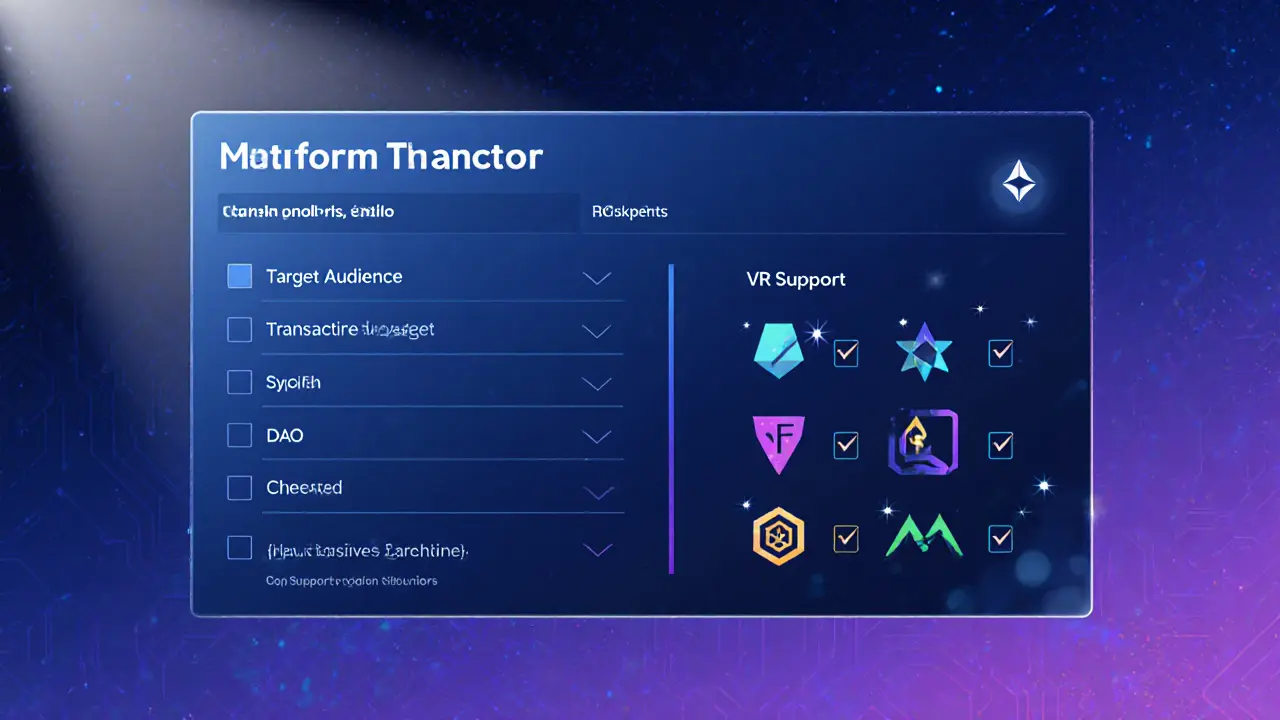Blockchain Metaverse Platforms
When exploring blockchain metaverse platforms, digital worlds built on blockchain that let users own, trade, and create assets in a decentralized environment. Also known as crypto metaverses, they combine Metaverse, a persistent 3D virtual space where people interact, Tokenomics, the economic model that powers in‑game currencies and incentives, and NFTs, non‑fungible tokens that represent unique items or land parcels. In simple terms, these platforms let you buy a virtual plot, earn rewards by playing, and sell your gear to anyone on the planet, all without a middleman.
How the Pieces Fit Together
Think of a blockchain metaverse platform as a three‑layer cake. The base layer is the underlying blockchain—Ethereum, Solana, or newer layer‑2 solutions—providing security and immutability. The middle layer is the tokenomics design; a well‑balanced economy needs a stable utility token, a fair distribution model, and mechanisms to prevent inflation. The top layer is the NFT marketplace where rare skins, virtual real estate, and collectibles live. This structure enables three key relationships: the platform encompasses virtual worlds, it requires robust tokenomics to keep players engaged, and it relies on NFTs to give each asset a unique identity. When any of these layers falters, user trust evaporates quickly—as we saw with several projects that launched without clear token utility and saw their markets crash.
Regulatory frameworks now play a starring role. Many jurisdictions treat platform tokens like securities, meaning projects must file disclosures or risk shutdown. Licensing guides, like the US BitLicense or Thailand’s exchange permits, often mention metaverse tokens because they can be used for fundraising. Compliance checklists are becoming standard in token launch decks, and airdrop campaigns now include KYC steps to satisfy anti‑money‑laundering rules. At the same time, cross‑chain bridges—think RenVM or other interoperability layers—let assets move between worlds, expanding market reach but also adding compliance complexity. That’s why smart developers study both the tech stack and the legal landscape before releasing a new virtual world.
All this means you’ll find a mix of topics in the articles below: step‑by‑step licensing guides, deep dives into tokenomics for specific metaverse coins, NFT utility case studies, and reviews of platforms that support virtual reality experiences. Whether you’re a gamer curious about earning real value, an investor scouting the next big virtual land rush, or a developer planning a launch, the collection gives you actionable insights and real‑world examples to help you navigate the fast‑moving blockchain metaverse space.

Top Blockchain Metaverse Platforms: Decentraland, The Sandbox & More
Jan 1, 2025, Posted by Ronan Caverly
Explore the top blockchain metaverse platforms, their underlying chains, key features, and how to pick the right virtual world for creators, brands, and investors.
MORESEARCH HERE
Categories
TAGS
- decentralized exchange
- crypto exchange review
- cryptocurrency
- crypto coin
- CoinMarketCap airdrop
- smart contracts
- tokenomics
- cryptocurrency exchange safety
- crypto exchange
- cryptocurrency airdrop
- crypto airdrop
- cryptocurrency exchange
- crypto airdrop guide
- blockchain token distribution
- DeFi
- crypto exchange scam
- crypto airdrop 2025
- Ethereum
- cross-chain interoperability
- ERC-20
